by Howard Gardner
Once I had begun to write about the varieties of human intelligence (Gardner, 1983/2011), people frequently asked me about the intelligences that leaders have—as well as the ones that leaders lack or do not need. As I pondered this question—which I’ll return to below—I formulated ideas about how leaders function, what makes for an effective leader, which leaders I have admired and why. As a lifelong citizen of a democratic society, it seemed natural for me to focus on voluntary leaders—people who are able to get, to persuade, to inspire others to think and act differently without forcing them to do so.
In Leading Minds (Gardner, 1995/2011) I portrayed 11 leaders whom I admired—ranging from university presidents, to military leaders, to individuals who—despite lacking an ascribed platform—succeeded in changing the minds and behaviors of many individuals. According to the cognitive view that I proposed in that book, leadership takes place as an exchange between minds. The powerful vehicles that leaders wield are not tangible weapons—they are stories. Leaders create stories—and they embody these stories in the lives that they lead. These “lives of saints” (and of “sinners”) are “existence proofs” so to speak. The evocative stories told and exemplified by effective leaders affect people; and, in turn, the people come to behave and act differently as a result of encountering the stories.
Today, I still believe this account in general. But events of the past 25 years have given me considerable pause.
By 2010, some wrinkles or challenges to my account were already becoming clear. In an edition of Leading Minds published the following year, in a section called “Leadership in the era of truthiness, twaddle, and twitter”, I reflected:
No leader today can afford to ignore this powerful trio: The ease of promulgating false statements; the detritus that permeates the blogosphere; and the prominence of the ad line and the gag line. Indeed the challenge to the leader is to counter these forces when they are inimical to his or her goals and to put forth a powerful counter-story that highlights truth against truthiness, clarity against twaddle, and a developed and substantiated story as opposed to a twitter-length teaser. As I write these lines, US president Barack Obama clearly understands these challenges; but it is uncertain whether he—or, indeed any thoughtful leader capable of complex thought—can be heard and understood above the din. (Gardner 2011, p. xii)
Of course the threats to authentic stories, compellingly told, and actually “lived” have been exemplified by the persona and behavior of President Donald Trump. But I don’t want to focus unduly on Trump because we hear similar contrived stories, and encounter analogous faux embodiments around the world—consider the words and actions of contemporary leaders—Bolsonaro (Brazil), Duterte (Philippines), Orban (Hungary), Erdogan (Turkey), Xi (China), Putin (Russia)… and the list could be easily extended.
Nor are these threats limited to the early twenty-first century. My cautionary words of 2010-2011 could (and perhaps should) have been applicable in the 1930s—in the years leading up to World War II—and no doubt in earlier eras as well. It has long been tempting for leaders to create powerful myths—posing as heroic loners, arrayed against the forces of evil—and to persuade an impressively sizable cohort of followers that what they say is true and that, as a consequence, their edicts should be followed. (Niccolo Machiavelli would not have been surprised). And as I pointed out in Leading Minds, a simple or even simplistic story all too often prevails over one that may be more accurate and more appropriate and more truthful, but also more complex.
An Approach to Good Leadership
In recent years, as part of what we call The Good Project (thegoodproject.org), my colleagues and I have shifted our focus from what makes for an effective leader to what makes for a good leader. And in this line of research, we have identified the three key features of a good leader:
Excellence: The good leader knows the field in which he occupies an influential role, keeps up with developments, and draws on his knowledge appropriately.
Engagement: The good leader cares about her work, finds it meaningful, looks forward to carrying it out effectively even at times when conditions are not favorable.
Ethics: The good leader ponders the ethical implication of contemplated words and actions, strives to do the right thing, reflects on consequences, and seeks to do better the next time.
It’s not always easy to determine whether someone is a good leader. With respect to excellence, many leaders rely on previous knowledge and/or do not know how to proceed when conditions change significantly. With respect to engagement, one may well be deeply engaged in carrying out work that is compromised or even malevolent (see Shakespeare’s histories and tragedies).
My colleagues and I have been particularly concerned with the ethical dimension. In almost any position of leadership, there are certain well-established norms and rules which can and should be followed. In following such norms, one does not need to exercise one’s ethical muscles.
The “ethical test” occurs when challenges arise for which the standard procedures are not adequate or appropriate, and when the leader recognizes this conundrum. I’ve termed this recognition the ethical “A-ha.” Indeed, if you don’t recognize and then attempt to deal with the new situation, there is no possibility of an “A-ha” nor, accordingly, for pursuing a better course of actions.
In such challenging situations, leaders need to reflect on intentions or motives, the means at their disposal, and the necessity of dealing with the consequences of the actions that they undertake or choose deliberately not to undertake (Nye, 2020). Accordingly, we judge the “goodness” of leaders in terms of recognition, action, consequences, and lessons learned. And of course, the cycle continues throughout the tenure of the leader.
Here’s a rough metric that one can apply in an evaluation of whether leaders qualify as good leaders:
They seek to determine the truth and tell the truth; and when they have made errors, they admit it and try to make amends.
They recognize the existing norms and abide by them, or are willing to challenge them openly and bear the consequences (which might entail civil disobedience).
When the norms are not adequate, or new issues arise, they publicly acknowledge this situation—I call this awareness The ethical “A-ha”.
They articulate and ponder the dilemma—they don’t claim to have all the answers.
They search for the best input—expert and political—including advice from a “team of rivals’’.
They make a decision openly, anticipate the consequences, are poised to change course as necessary, and to revisit the consequences of actions taken or not taken.
They indicate their willingness to repeat this cycle and, ultimately, help to bring about a new or revised norm of ethical awareness and reflectiveness with respect to the conditions with which they have been dealing.
A Word on Intelligences
As mentioned, once I began to carry out scholarly work on leadership, I was asked about the kinds of intelligences that leaders had. I formulated an answer to this question: Leaders need linguistic intelligence, because they are essentially story tellers; and they need interpersonal intelligence, because they have to put themselves in the place of audience members or followers and appeal to their better angels. It is helpful as well if they have intrapersonal intelligence—though, as illustrated by the case of President Ronald Reagan, one can be an effective leader even if one has little inclination toward introspection. Other intelligences (musical, spatial, etc.) are fine, but they are optional.
When asked about Donald Trump’s intelligences, I was initially stumped—because he has modest gifts in language (several commentators have suggested that he is dyslexic, and his vocabulary seems to be quite limited); and clearly he has not an inkling of intrapersonal intelligence. This is not a new story at all—the long-standing saga of populism in the US.
Perhaps we should postulate a new intelligence—media intelligence. Because even if one wants to castigate Trump, one must concede that he mastered the medium of television via his long-running show The Apprentice and has used Twitter in a way which is astoundingly successful (Trump 2020). Media intelligence might be a form or strand of interpersonal intelligence, but one entirely devoid of empathy or of understanding of particular individuals (as contrasted with an appreciation of “the crowd”). And indeed, in the past, successful leaders have displayed mastery of the new media—Franklin Roosevelt (and, alas Adolf Hitler) with respect to radio, John F Kennedy with respect to television, Ronald Reagan with respect to movies, and so on.
It’s also been suggested that Trump has the ability to read the “spirit of the times”, a more significant achievement. That may be so. On the other hand, it’s equally possible that he has long had a litany of complaints and proposals over the decades and—for reasons unconnected to his persona—the spirit of the time intersected with his program.
Concluding Note
My goal in this essay is not to denigrate Trump or to raise other leaders to a higher status. Rather, I have sought to revisit my initial conception of leadership. Specifically, I have emphasized the need to take into account a fast-changing landscape; and the pressures to master the most popular media of communication. Also, I no longer take for granted a democratic society with clear standards of right and wrong and with a faith in the importance of the truth. Rather I have focused on what it means to be a good leader and on the properties and processes that a good leader needs when faced with challenging dilemmas. In a phrase, we don’t need more leaders—we need better ones; and we need to help those with leadership potential to deploy their gifts in pro-social ways.
©Howard Gardner 2020
References
Gardner, H. (1983/2011). Frames of mind: The theory of multiple intelligences. New York: Basic Books.
Gardner, H. (1993) 1993). Creating Minds. New York: Basic Books.
Gardner. H (1995/ 2011). Leading Minds. New York: Basic Books.
Gardner, H. (2011). Truth, Beauty and Goodness Reframed. New York: Basic Books.
Gardner H. Ed. (2010). Good Work; Theory and Practice. Available at: https://static1.squarespace.com/static/5c5b569c01232cccdc227b9c/t/5e7e1b520a5e5d2a3e0677fc/1585322850147/GoodWork-Theory_and_Practice-with_covers.pdf
Nye, J. (2020). Do Morals Matter? New York: Oxford University Press.
Trump, M. (2020). Too Much and Never Enough. New York: Simon and Schuster.





